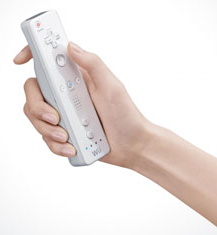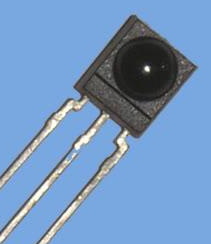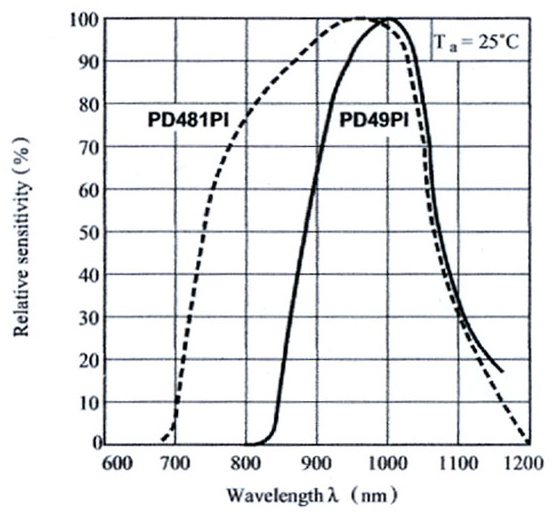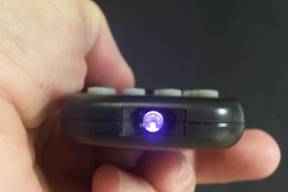|

|
|
|
|
|
|
|
|
Wrong LED Wavelength
February 27, 2010 |
 |
I got a call from a lighting company.
The company made custom overhead light assemblies, used mostly for hospitals. One of
the accessories the company offered with their lights was a hand held infrared remote.
The user could point the remote at a light receiver built into the toggle switch panel and
control the lights. The company had been buying these simple remotes from the same company
for many years without problems. |
| Now,
they were starting to get complaints from their customers about the remote. The
users noticed that the distance the remote operated when aimed at the wall-mounted
receiver was far shorter than previous models. In some cases, the user had to be
within just a few feet of the receiver before the lights could be turned on, off or
dimmed. The lighting company conducted some of their own tests and came to the same
conclusion. What was going on with these units? |
 |
 |
| Infrared Remote |
Infrared LED |
|
| The
company sent me a few new remotes and one older unit. They also sent me a light
receiver module circuit, which fit inside a custom wall switch with a sliding dimmer
control. |
| I
opened up one of the new units and also one of the old remotes sent to me. Both
units looked absolutely identical. Every single part inside looked the same. I
probed around with my scope and found the 40KHz LED drive signal. That also looked
the same on both units. I switched my attention to the receiver module. Both
remote units performed about the same at close range but when the new unit was moved 5
feet away, the received signal became noisy. The old unit worked well out to 25+
feet. What was the difference? I used a photodiode, with a 100 ohm load
resistor as crude light intensity sensor and held the device directly in front of the
infrared LED of the two units. I then connected the my scope probe across the
resistor. The older unit measured a bit more light but there was not enough of a
difference between the two to account for the lack of range. The position of the LED
die within the T 1 ¾ clear epoxy package was very much the same between the two units.
This meant that the light beam pattern would be much the same too. So, what was the
difference? I suspected it was the LED but what was different about it? |
 |
 |
| IR Remote Receiver
Module |
Photodiode Response with
Filters |
|
| Most
remote infrared receiver modules use a daylight filter dye in their package. Many
cut off light shorter than about 750nm. But, some of the filters in other receiver
modules are much more aggressive about filtering out ambient light than others. As
the right side curve shows above, in many infrared remote receivers, virtually all the
light below 900nm is cut off. To make it through the filter, infrared LEDs would
need to have a wavelength longer than 900nm.950nm to 980nm were typically used.
I removed the LED installed in one of new remote units and replaced it with a LED, known
to have a wavelength of 950nm. When I measured the maximum range to the light
receiver module, the distance was now nearly 30 feet. Bingo! The manufacturer
of the remote must have switched their LEDs from 950nm to 850nm. That does not sound
like much, but with the sharp cutoff daylight filter of the receiver module, it made a big
difference. I sent my report to the company who in turn communicated my findings and
recommended LED part number to the remote manufacturer. Within a week,
replacement remotes started coming in and where quickly sent out to the users in the
field. |
| One
quick way to note if the LED is emitting 850nm Vs 950nm is to look at the light from an
active LED in a dark room. In most cases, you will be able to see a dull red glow
from the 850nm part and not see any light from the 950nm device. |
| |

|
|
| |
Dull Glow from IR LED |
|
|
|
|
|